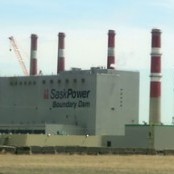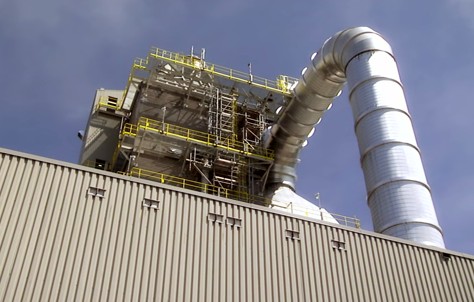Last week, politicians, scientists and journalists jetted in from around the world and packed a makeshift auditorium in Saskpower's Boundary Dam coal-fired power plant outside of Estvan, Canada, normally a quiet, overflown speck-of-a-town on the plains of Saskatchewan. They eagerly waited for the climactic milestone-moment.

The supportive audience applauded after Saskpower officials threw the switch on the new $1.4-billion Carbon Capture and Sequestration (CCS) retrofit of unit number 3, which has been an over-scrutinized showcase since 2008, when Prime Minister Stephen Harper visited the site and made the project real by handing out $240 million in federal funding. As the machinery hummed and the applause died down, SaskPower executive Mike Monea acknowledged that the project was over budget (which everyone in the small industry already knew) and that it will be months before the utility can finally tally up the bill. In fact, $400 million of the project went for revamping Unit 3, which included addng a new turbine to crank out 162 MW of electricity (see this Saskpower demo). He explained that first-mover expenses are always higher than future plants, and to make the point added that Saskpower had over-engineered the capture technology to hit its 90 percent target rate; once the on-line performance data comes in, he promised, right-sizing will drop future costs, making Saskpower's amine version of CCS an even more marketable option (press release). Afterwards, the utility made sure that every GHG-geek got a walking-tour (see interactive video) to see the beginning of a global market that could swell to more than $160 billion - if that constantly receding "global market" ever moves out of its stubborn boutique phase.
Sticking with coal
Even before construction started three years ago, urgency had been building to reduce Saskatchewan's greenhouse gas emissions, which are 3.5 times Canada's national average and exceed nearly every other developed industrial country. And SaskPower monopolizes a big chuck of that. The retrofit became even more imperative after new Canadian regulations limited carbon dioxide output to less than 420 tons a gigawatt hour of electricity. With the retrofit, the Boundary Dam CCS unit will drop its output to a mere 150 tons a gigawatt hour. It's also easy to understand why Saskpower stuck with coal: the province relies on lignite to generate 50 percent of its power and has grown fat and comfortable sitting on more than 300 years of reserves. So it made sense when the company set out to design and build the world's first commercial clean coal power plant. If everything goes according to plan, the new technology will reduce CO2 emissions by 90 percent, and coal will finally be destigmatized for many consumers. Now, the world's watching to see if SaskPower's high-risk-high-reward gamble can become a commercial success.
Making carbon capture profitable
One inconvenient fact handicaps Boundary Dam. Running a carbon capture system is energy-intensive. It requires about 34 MW to operate, which results in a parasitic power loss of 21 percent. Then other systems eat up another 18 MW, reducing the net output to 110 MW. Given the reduced energy output, Saskpower had to find a way to make carbon capture economically viable. It turned waste and pollutants into valuable commodities. The plant sells and then pipes the captured carbon dioxide to an oilfield operated by Cenovus, Canada's No. 2 oil and gas producer, for use in enhanced oil recovery (EOR). As a matter of fact, it's an unfortunate but pragmatic fact that most carbon capture projects in the US are taking the CO2-to-EOR route to help make the numbers work.

Captured sulfur dioxide emissions will also produce 50 tons per day of sulfuric acid for industrial customers, and SaskPower will sell the plant's combustion cast-off, known as coal ash, for products like drywall and concrete.
2,300 existing coal-fired power plants
One of the key features of the plant's post-combustion technology is that it can be retrofitted to power plants that are already up and running. SaskPower Chief Executive Robert Watson said, "We expect this to become a model for plants around the world." With more than 2,300 coal-fired power plants around the world, deploying post-combustion CCS technology like Boundary Dam's is a sure but expensive way to reduce greenhouse gases, and the company has already fielded a lot of interest from countries like China and India. Currently, these countries' growth projections dictate some reliance on coal. India's new environment minister, Prakash Javadekar, said that even though his government will be installing large new solar arrays, its first priority was to end poverty by improving the economy, which would require new coal-powered electricity. He clarified his country's position to the New York Times a day after the United Nations climate summit: "Twenty percent of our population doesn't have access to electricity, that's our top priority. We will grow faster, and our emissions will rise." Given the additional greenhouse gas emissions that new coal plants will cause, cutting the cost of CCS to make it accessible is vital. SaskPower says that it has already learned enough from Boundary Dam to help other countries build their new CCS plants much more cheaply.


